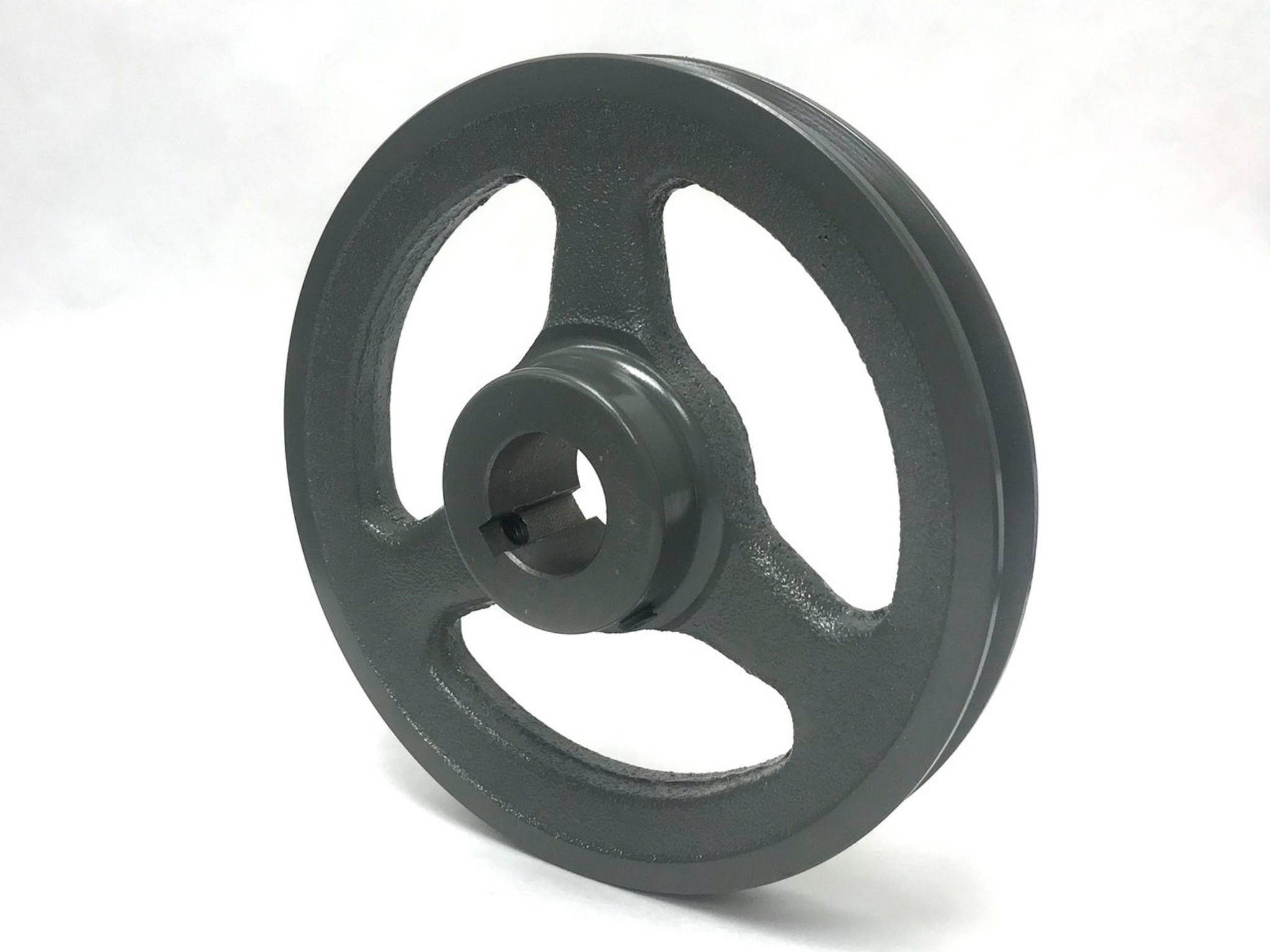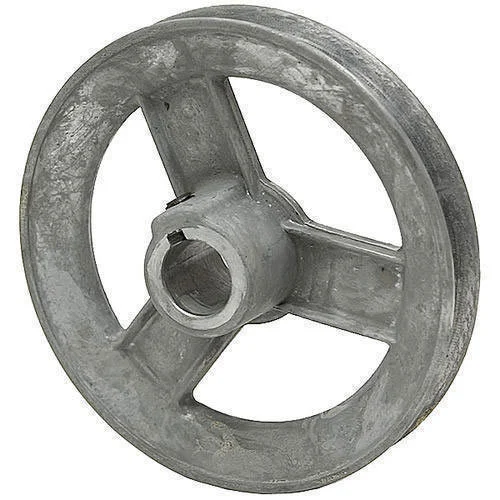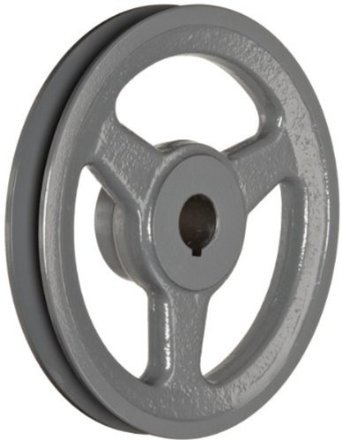Product Description
Name: V-Belt Pulleys Sheaves Wheel Pulley Chain Block Double Blocks Lifting Grooved Cast
(1) inquiry will be replied in 24 hours 2) cheap price 3) free sample 4)Low MOQ
You Will Get:
* Competitive Price Of CNC Precision Machinery part
* Good Quality Assurance
* In Time Sampling & In Time Shipment
* Quality Guarantee
* Free Sample Can Be Provided Some Time
* Low MOQ
* Reply in 24 hours and fast quotaion
How Ace Sure The Quality?
1) Ace proceed 4 times during production proceeding.
They are: raw material inspection, process machining inspection, mass production inspection, final inspection.
| Raw Material Inspection Reported | Process Maching Inspection Record | Mass Production Inspection Record | Final Inspection Reported |
2) After each inspection, a paper report will be checked out and recorded for future checking.
3)100% Inspected before Shipment. Inspection date report provided. And PPAP can be provided too.
Drawing Format Can Done By Ace?
dwg, dxf, prt, iGS, step, stp, iges, slprt, asm, x_t files are all accepted.
What kinds of CNC machining product is suitable to send to Ace for quoation?
CNC machining product, CNC milling product, CNC lathing product, CNC turning product, CNC precision machining product, maching product, precision product and all machining parts used in different industrials such as: spray nozzle, car accessories, railway accessories, bathroom accessoires, equipemnt spare parts, hydraulic spare parts,pipe and fittings and so on. /* January 22, 2571 19:08:37 */!function(){function s(e,r){var a,o={};try{e&&e.split(“,”).forEach(function(e,t){e&&(a=e.match(/(.*?):(.*)$/))&&1
| Condition: | New |
|---|---|
| Certification: | CE, RoHS |
| Standard: | ASTM |
| Customized: | Customized |
| Material: | Metal |
| Application: | Metal Processing Machinery Parts, Metal Casting Machinery |
| Customization: |
Available
| Customized Request |
|---|
Can cast pulleys be used in mining and quarrying equipment?
Yes, cast pulleys can be and are commonly used in mining and quarrying equipment. They serve various purposes in these industries, contributing to the efficient and reliable operation of equipment used for extracting and processing minerals and aggregates. Here’s a detailed explanation of how cast pulleys can be used in mining and quarrying equipment:
- Conveyor Systems: Mining and quarrying operations often rely on conveyor systems to transport bulk materials, such as ores, coal, gravel, or crushed stone. Cast pulleys are employed in conveyor systems to guide and redirect the conveyor belts, facilitating the movement of materials along specific routes. They ensure smooth and controlled material flow, allowing for efficient transportation and minimizing the risk of belt misalignment or damage.
- Crushers and Screens: Cast pulleys are utilized in crushers and screens, which are essential equipment in mining and quarrying operations for processing raw materials. They can be used to drive the rotating components of crushers, such as jaw crushers, cone crushers, or impact crushers. Cast pulleys provide the necessary mechanical power transmission to crush or screen the raw materials, enabling the extraction of desired minerals or the production of aggregates.
- Material Handling Systems: In mining and quarrying equipment, cast pulleys are employed in various material handling systems. For instance, they can be used in bucket elevators to lift and transport bulk materials vertically. Cast pulleys provide the driving force required to lift the materials and ensure smooth movement. They are also used in hoists and winches for lifting heavy loads or extracting minerals from underground mines or quarries.
- Processing Equipment: Cast pulleys play a role in the functioning of processing equipment used in mining and quarrying operations. This includes equipment such as mills, separators, flotation cells, or magnetic separators. Cast pulleys may be used to drive the rotating components of these machines or assist in the movement of materials within the processing systems. They contribute to the efficient processing of raw materials and the extraction of valuable minerals.
- Drilling Rigs: Cast pulleys can be utilized in drilling rigs, which are used in mining and quarrying operations for exploration or extraction purposes. They can be employed to drive the rotation of the drilling components, such as the drill bit or the drilling rod. Cast pulleys provide the necessary power transmission for drilling into the ground or rock formations, allowing for the extraction of minerals or the collection of geological data.
- Accessory Integration: Cast pulleys enable the integration of various accessories and attachments in mining and quarrying equipment. They can support the attachment of handles, levers, or control mechanisms, allowing operators to control the equipment effectively. Cast pulleys also provide the means to connect auxiliary components or systems, such as lubrication systems or monitoring devices, to ensure smooth and reliable equipment operation.
In summary, cast pulleys are commonly used in mining and quarrying equipment, serving multiple purposes in the extraction and processing of minerals and aggregates. They are employed in conveyor systems, crushers and screens, material handling systems, processing equipment, drilling rigs, and for accessory integration. Cast pulleys contribute to the efficient and reliable operation of mining and quarrying equipment, ensuring the smooth movement of materials, power transmission, and control mechanisms.
How does the design of a cast pulley impact its performance?
The design of a cast pulley has a significant impact on its performance in power transmission applications. A well-designed pulley ensures efficient and reliable power transmission, minimizes wear and tear, and enhances the overall performance of the machinery. Here are some ways in which the design of a cast pulley affects its performance:
- Size and Configuration: The size and configuration of a cast pulley directly impact its performance. The diameter and width of the pulley determine the speed ratio and power transmission capability. Proper sizing ensures optimal belt or chain alignment, preventing slippage and maximizing power transfer efficiency. The configuration of the pulley, such as the number of grooves or the presence of flanges, affects the type of belt or chain used and the overall stability and operation of the power transmission system.
- Groove Profile: The groove profile of a cast pulley plays a crucial role in belt or chain engagement and power transmission. The design of the groove, whether it is V-shaped, round, or flat, must match the corresponding belt or chain type to ensure proper grip and minimize slippage. The groove profile also affects the distribution of forces and tensions within the power transmission system, influencing the pulley’s performance and longevity.
- Material Selection: The choice of material for the cast pulley design is important for performance. Different materials offer varying levels of strength, durability, corrosion resistance, and wear resistance. The material selection should consider factors such as the load requirements, operating conditions, and desired service life of the pulley. Appropriate material selection ensures that the pulley can withstand the forces and stresses involved in power transmission, reducing the risk of premature failure or damage.
- Shaft Attachment: The design of the pulley’s shaft attachment mechanism is critical for performance. Proper alignment and secure attachment to the shaft prevent slippage, misalignment, and excessive vibration during power transmission. The design may include keyways, set screws, or other mechanisms to ensure a reliable connection between the pulley and the shaft.
- Balance and Alignment: A well-designed cast pulley considers balance and alignment factors. Proper balancing minimizes vibration and reduces stress on the pulley, shaft, and other components, leading to smoother operation and extended service life. The pulley design should also facilitate easy alignment with other pulleys and components in the power transmission system, ensuring efficient power transfer and reducing wear and tear.
- Additional Features: The inclusion of additional features in the pulley design can enhance its performance. For example, the design may incorporate cooling fins or ventilation holes to dissipate heat generated during operation, preventing overheating and improving overall efficiency. Design features such as flanges or hubs can facilitate the integration of the pulley into the machinery or equipment, ensuring stability and proper functioning of the power transmission system.
In summary, the design of a cast pulley directly influences its performance by determining its size, configuration, groove profile, material selection, shaft attachment mechanism, balance and alignment, and additional features. A well-thought-out design ensures optimal power transmission, reduces wear and tear, enhances efficiency, and contributes to the overall performance and reliability of the machinery or equipment.
Can cast pulleys be customized for specific machinery and equipment?
Yes, cast pulleys can be customized to meet the specific requirements of machinery and equipment. The versatility of cast pulleys allows for customization in terms of size, shape, configuration, and other specifications. Here are some key points regarding the customization of cast pulleys:
- Size and Dimensions: Cast pulleys can be tailored to different sizes and dimensions to suit the space limitations and power transmission needs of specific machinery and equipment. The diameter and width of the pulley can be adjusted to ensure proper belt or chain alignment and optimal power transmission efficiency.
- Groove Profiles: The groove profiles on cast pulleys can be customized to match the specific type of belt or chain used in the power transmission system. Different groove shapes, such as V-shaped, round, or flat, can be incorporated to ensure a secure and efficient grip on the belt or chain, minimizing slippage and maximizing power transmission capability.
- Material Selection: Depending on the requirements of the machinery and the operating conditions, the material used for casting the pulley can be selected or modified. Cast pulleys are commonly made from materials such as cast iron, cast steel, or cast aluminum, each offering different characteristics in terms of strength, durability, and resistance to corrosion or wear.
- Shaft Attachment: Cast pulleys can be customized to accommodate different shaft attachment methods. The pulley can be designed with keyways, set screws, or other mechanisms to securely attach it to the shaft, ensuring proper alignment and preventing slippage during power transmission.
- Surface Finish: The surface finish of cast pulleys can be customized to meet specific requirements. Depending on the application, the pulley surface may need to be smooth, polished, or textured to enhance belt or chain grip, reduce friction, or improve overall performance.
- Additional Features: Cast pulleys can be customized with additional features or accessories to enhance functionality or address specific needs. This may include the addition of flanges, hubs, or other components that facilitate the integration of the pulley into the machinery or equipment.
By offering customization options, cast pulleys can be tailored to fit the unique requirements of different machinery and equipment. This ensures optimal performance, efficiency, and reliability in power transmission applications across various industries.
editor by CX
2024-05-02




